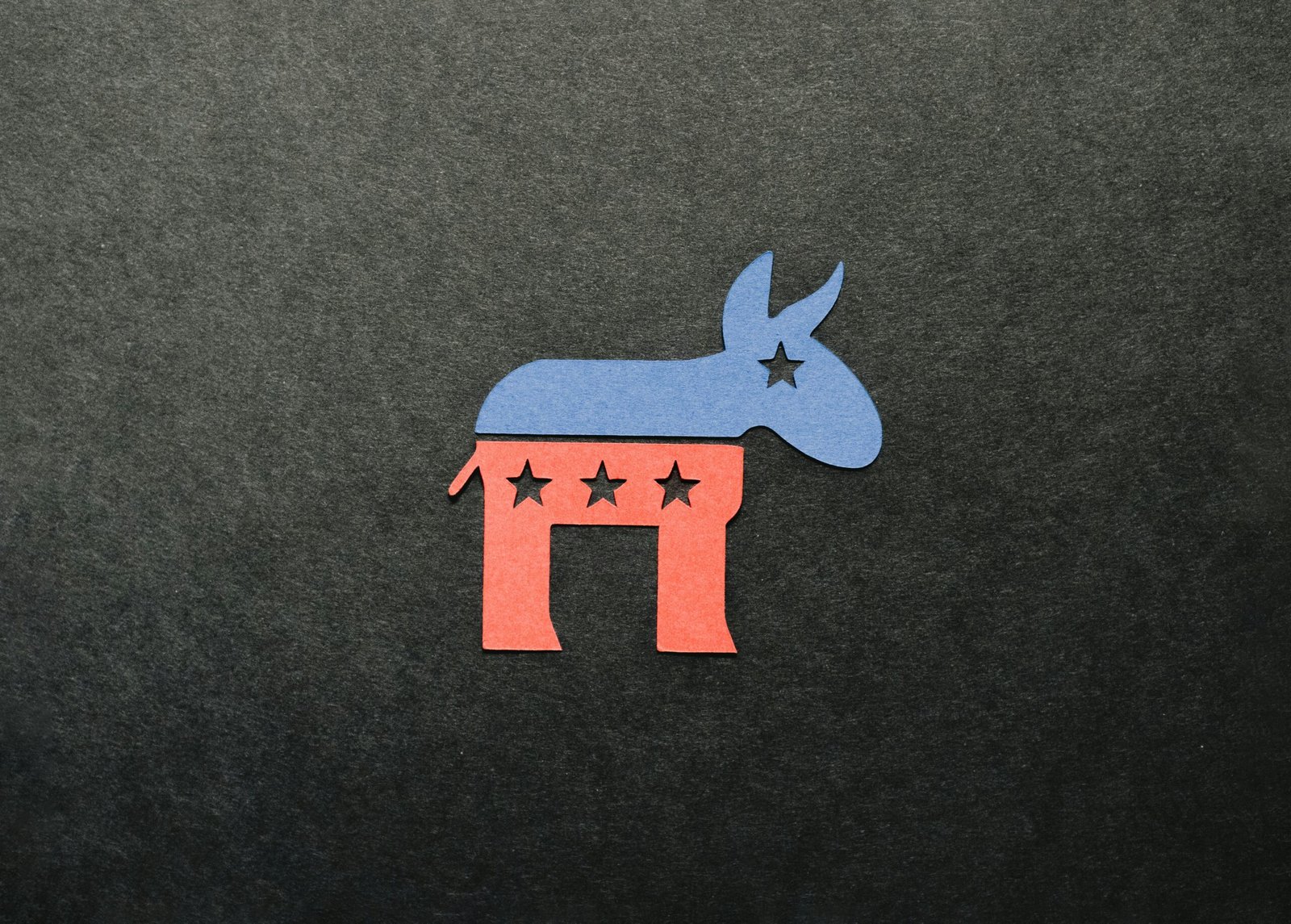The Cracks in the Democratic Party
The Democratic Party, historically celebrated for its diversity and inclusivity, is currently grappling with significant internal divisions. These rifts are largely attributable to ideological rigidity and an increasing inability to reconcile diverse viewpoints within its ranks. One of the most prominent fault lines lies between the progressive and moderate factions of the party. Progressives advocate for sweeping changes, including Medicare for All, the Green New Deal, and free college tuition, while moderates urge a more incremental approach, favoring policies that are perceived as more palatable to a broader electorate.
This ideological tug-of-war has led to public disputes and has weakened the party’s cohesiveness. For instance, the 2020 primary elections vividly illustrated these divisions, with candidates like Bernie Sanders and Elizabeth Warren pushing the progressive agenda, while Joe Biden and Pete Buttigieg represented the more moderate stance. The tension between these factions often results in conflicting messages and a lack of a unified strategy, which can alienate voters who are looking for clear and consistent leadership.
The perception that the Democratic Party is ‘brainwashed’ or out of touch with broader voter bases further exacerbates these internal conflicts. Many voters feel that the party’s leadership is dominated by an elite group that is disconnected from the everyday concerns of average Americans. This sentiment is particularly strong among younger voters and minority communities, who feel that their voices are not adequately represented within the party’s higher echelons.
The consequences of this fragmentation are far-reaching. A divided party struggles to present a coherent, unified front, which is essential for electoral success. This lack of unity can lead to the erosion of voter support, as disillusioned constituents may either abstain from voting or switch their allegiance to alternative parties or independent candidates. Moreover, the inability to harmonize diverse viewpoints within the party hinders the development and implementation of effective policies, thereby compromising the party’s overall effectiveness and credibility.
In navigating these internal crises, the Democratic Party faces the daunting challenge of balancing ideological diversity with the necessity for unity and cohesion. Failure to address these internal divisions could result in significant political setbacks, both in terms of policy achievements and electoral outcomes.
The Republican Party: A Shift Towards Trump-Centric Politics
The Republican Party has undergone a significant transformation in recent years under the influence of Donald Trump. Historically, the party has championed principles such as limited government, free-market economics, and a strong national defense. However, the advent of Trump’s leadership has shifted the focus from these traditional tenets to a more Trump-centric agenda. This shift is not just about policy changes but also about the embodiment of a singular personality at the forefront of the party.
The Trump-centric approach has led to the rise of initiatives like Project 2025, which aims to consolidate various conservative agendas under Trump’s personal vision. While this has galvanized a substantial base of loyal supporters, it has also alienated traditional conservatives who feel that the party is losing its ideological roots. The emphasis on Trump’s persona has raised concerns about the Republican Party evolving into a personality cult, where loyalty to an individual supersedes adherence to long-standing principles and policies.
The implications of this shift are multifaceted. On one hand, the Trump-centric strategy has energized a portion of the electorate, leading to high levels of political engagement and voter turnout among Trump’s supporters. On the other hand, it has created internal rifts, causing some lifelong Republicans to distance themselves from the party. This internal division poses risks to the party’s unity and coherence, potentially affecting its ability to present a united front in future elections.
In the long term, the Republican Party faces the challenge of redefining its identity. The focus on Trump’s personal agenda may lead to a narrowing of the voter base, limiting its appeal to a broader spectrum of Americans. Additionally, the party’s political strategy may become increasingly reactive, centered around defending or promoting Trump’s legacy rather than developing forward-thinking policies. As the party navigates these complexities, it must strike a balance between maintaining its traditional values and adapting to the evolving political landscape.
Parallels Between Democratic and Republican Downfalls
The internal crises plaguing both the Democratic and Republican parties exhibit striking similarities, particularly in terms of ideological rigidity and leadership cults. For the Democrats, the emphasis on strict adherence to progressive principles has often marginalized moderate voices within the party. This ideological rigidity has created a divisive atmosphere, where dissent is not only discouraged but actively suppressed. Similarly, the Republicans have experienced a Trump-centric focus, where loyalty to the former president has become a litmus test for party membership. This has led to a form of ‘brainwashing,’ where deviation from the Trumpian line is met with severe backlash.
These trends have significant implications for democratic principles within both parties. The suppression of diverse viewpoints stifles healthy debate and undermines the foundational democratic ideals of freedom of thought and speech. For instance, recent political events like the Democratic primaries have showcased how candidates with moderate or divergent views struggle to gain traction, often facing hostility from more radical factions within the party. On the Republican side, the aftermath of the 2020 Presidential Election saw widespread support for baseless claims of election fraud, illustrating how Trump’s influence has skewed the party’s stance on democratic processes.
Public reactions to these internal dynamics have also highlighted the challenges both parties face in connecting with a broader electorate. Voters increasingly express disillusionment with what they perceive as the parties’ inability to address practical issues due to internal conflicts. Surveys and polls consistently show a growing number of Americans identifying as independents, disenchanted with the binary choice offered by the current political landscape. This trend reflects a broader dissatisfaction with the internal crises that have come to define both the Democratic and Republican parties.
In essence, the parallels between the downfalls of these two major political parties underscore a critical juncture in American politics. The emphasis on ideological purity and unwavering loyalty to specific leaders has not only eroded democratic principles within the parties but also alienated a significant portion of the electorate, posing a substantial challenge to their future viability.
Paths to Recovery: Strategies for Democrats and Republicans
As the Democratic and Republican parties navigate internal crises, strategic recovery pathways are essential for regaining stability and public trust. For the Democrats, a promising approach lies in fully embracing democratic principles that emphasize inclusivity and unity. Bridging the gap between progressive and moderate factions is crucial. This can be achieved through open dialogues and policy compromises that reflect the diverse perspectives within the party. Emphasizing policies that resonate with a broad base of constituents, such as healthcare reform, climate action, and social justice, can foster a sense of cohesion and purpose.
On the other hand, the Republican Party faces the challenge of distancing itself from the dominant influence of Donald Trump. Reaffirming traditional conservative values, such as fiscal responsibility, limited government, and personal liberty, can help re-establish the party’s core identity. Crafting a coherent policy agenda that extends beyond Project 2025 is essential. This agenda should address pressing issues like economic growth, national security, and immigration reform, offering clear and practical solutions that appeal to a wide array of voters.
Both parties must prioritize internal reforms and leadership changes to facilitate these recovery strategies. For Democrats, leadership that embodies progressive ideals while valuing moderate insights can create a balanced and effective governance model. Republicans, in turn, need leaders who can articulate a future vision that resonates with both traditional conservatives and newer members of the party. Effective communication is paramount in this process. Transparent, consistent, and engaging communication strategies can help rebuild trust and clarify each party’s vision for the future.
Ultimately, the path to recovery for both Democrats and Republicans involves a combination of embracing core values, fostering unity, and presenting clear policy solutions. Through these measures, both parties can hope to overcome their internal crises and emerge stronger, more cohesive, and better equipped to serve the American people.


Leave a Reply